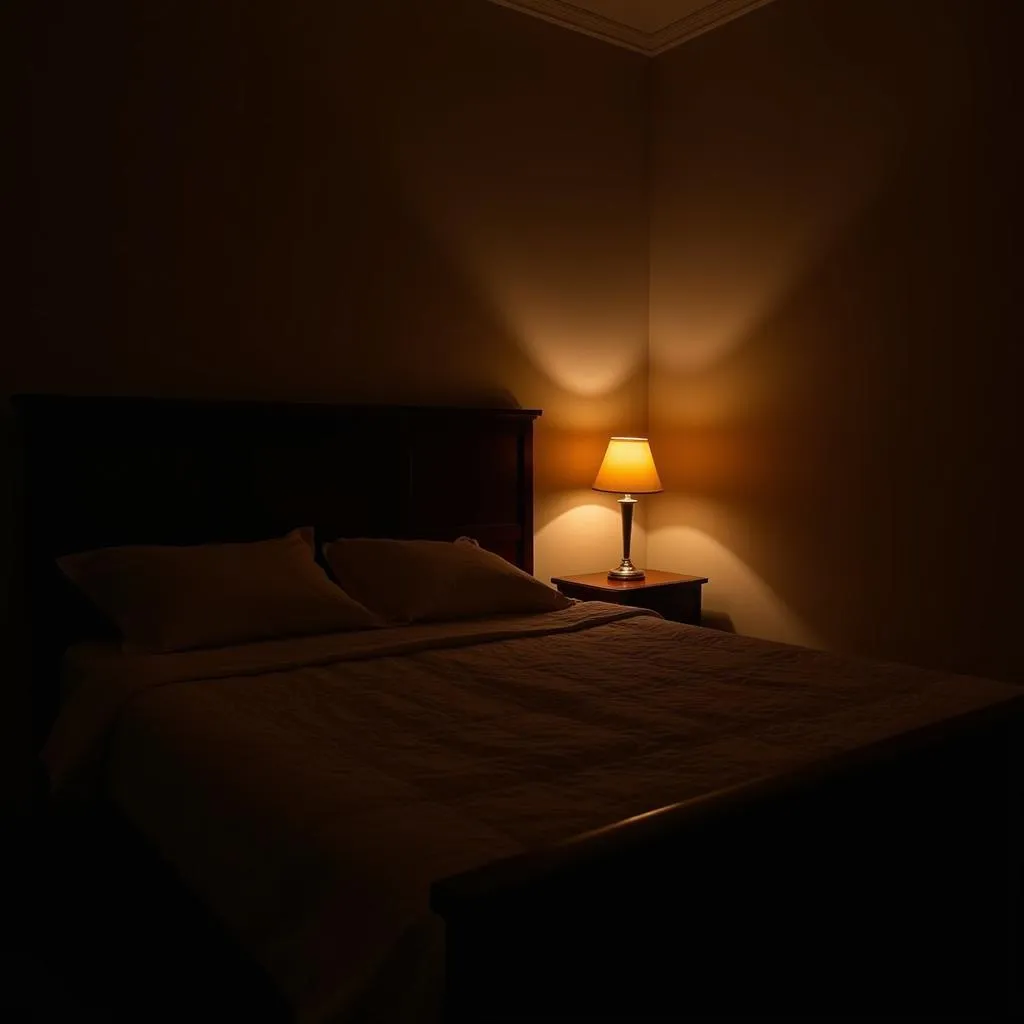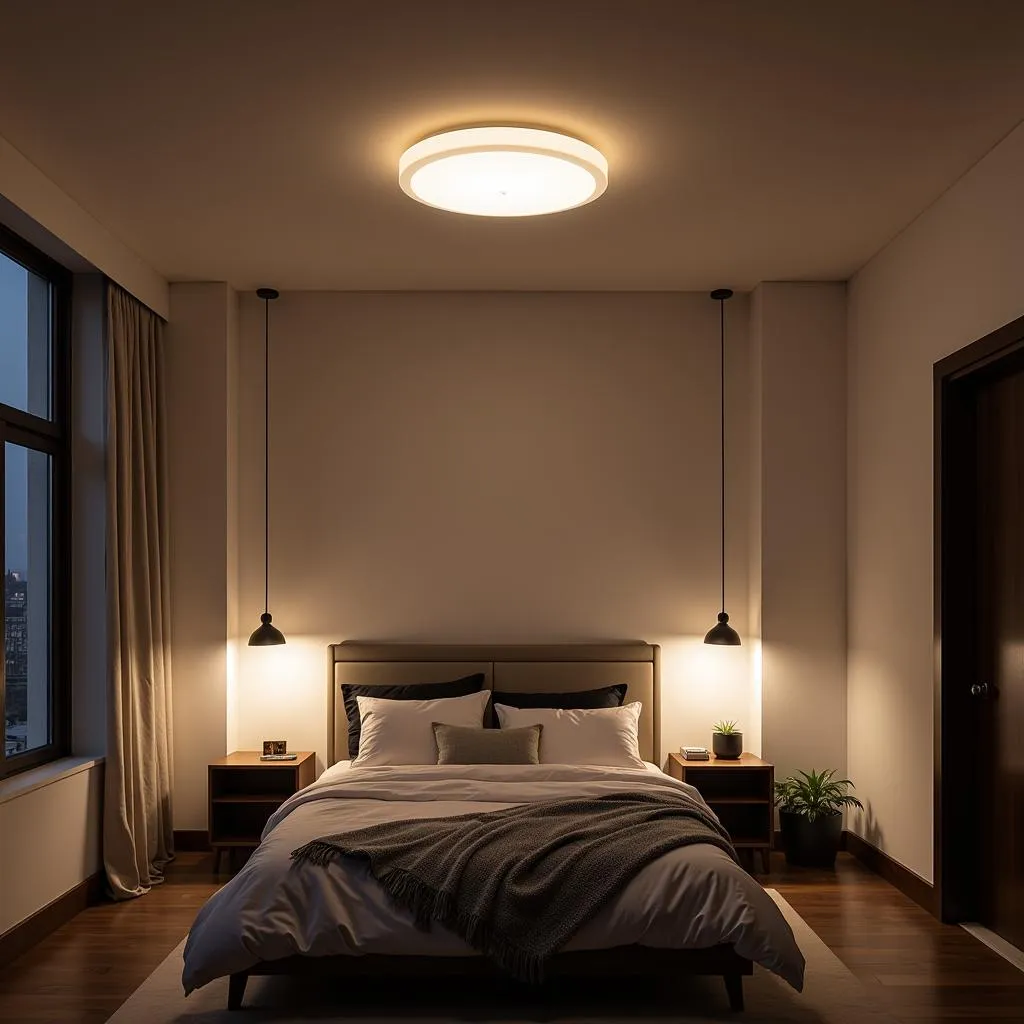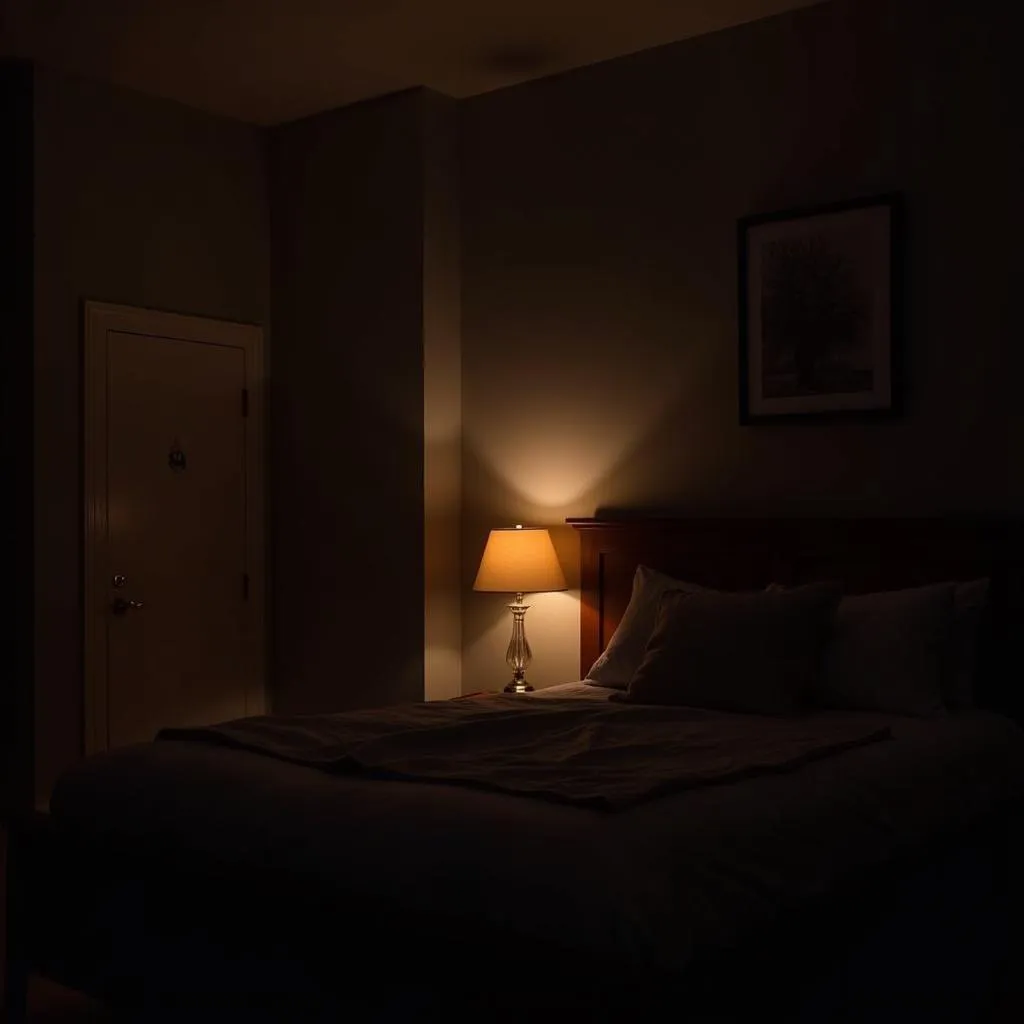When it comes to a good night’s sleep, every detail matters. From cozy bedding to the perfect room temperature, creating a relaxing sleep environment is key. One often-overlooked factor is the color of your lights, especially LED lights which have become increasingly popular. So, what is the best LED light color to sleep with?
 Best LED Light Color for Sleep
Best LED Light Color for Sleep
The Science of Light and Sleep
Our bodies are governed by natural rhythms, and light plays a crucial role in regulating our sleep-wake cycle, also known as the circadian rhythm. Exposure to light, particularly blue light, suppresses the production of melatonin, a hormone that signals our bodies it’s time to sleep. Conversely, darkness encourages melatonin production, easing us into slumber.
Why Color Matters: The Impact of Different LED Light Colors
LED lights offer a spectrum of colors, each with a different impact on sleep:
- Blue Light: Often emitted from electronic devices and cooler-toned LED lights, blue light is the most disruptive to sleep. It effectively blocks melatonin production, making it difficult to fall asleep and potentially impacting sleep quality.
- White Light: Similar to blue light, bright white light can interfere with melatonin production. However, warmer shades of white light are less stimulating.
- Green Light: Some studies suggest that green light may have a calming effect and could promote relaxation before bedtime.
- Red Light: Considered the least disruptive to sleep, red light has a long wavelength that doesn’t interfere with melatonin production.
- Amber Light: Like red light, amber light also has a calming effect and can help signal your body to prepare for sleep.
 Color Temperature Chart for Sleep
Color Temperature Chart for Sleep
So, What’s the Verdict?
While individual preferences vary, warm-colored LED lights, specifically those with red or amber hues, are generally considered the best for sleep. These colors have minimal impact on melatonin production and create a relaxing atmosphere conducive to sleep.
“I always recommend my clients switch to warm-toned lighting in their bedrooms at least an hour before bed,” says renowned sleep specialist, Dr. Emily Carter. “This simple change can make a significant difference in sleep quality.”
Tips for Creating a Sleep-Friendly Lighting Environment
- Choose the Right Bulbs: Opt for LED bulbs specifically marketed as “sleep-friendly” or with a color temperature below 3000K (Kelvin).
- Dim the Lights: As bedtime approaches, gradually dim your lights to mimic the natural sunset and signal your body to wind down.
- Use Nightlights Strategically: If you need a light source during the night, opt for dim, red-toned nightlights, particularly in bathrooms.
- Limit Screen Time: The blue light emitted from electronic devices is highly disruptive to sleep. Minimize screen time in the hour or two before bed.
 Dimmable LED Lights for Bedroom
Dimmable LED Lights for Bedroom
Conclusion
Creating the perfect sleep environment involves a combination of factors, and lighting is a key element. By understanding the impact of different LED light colors, you can make informed choices to optimize your bedroom for sleep. Choosing warm-colored LED lights, particularly red or amber, can significantly improve your sleep quality and help you wake up feeling refreshed and energized.
FAQs
1. Can I use any red LED light for sleep?
While most red LED lights are less disruptive to sleep, it’s best to choose bulbs specifically marketed as “sleep-friendly.”
2. Should I avoid all blue light before bed?
It’s best to minimize exposure to blue light in the hour or two before bed. You can use blue light filters on your devices or wear blue light blocking glasses.
3. Can I use salt lamps for sleep?
While salt lamps emit a warm, calming glow, their impact on sleep hasn’t been scientifically proven. However, many find them relaxing.
4. Does the brightness of the light matter?
Yes, even with warm-colored lights, it’s important to dim the brightness as bedtime approaches.
5. How long does it take for light to affect melatonin production?
Light can begin to suppress melatonin production within minutes of exposure.
Need further assistance? Contact us at Phone Number: 0373298888, Email: [email protected], or visit us at 86 Cầu Giấy, Hà Nội. We have a 24/7 customer service team ready to help.


